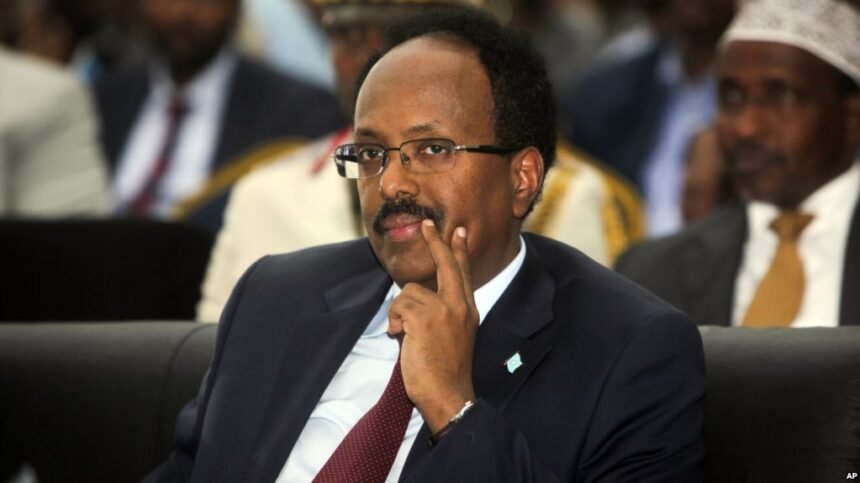
FILE – Somalia’s President Mohamed Abdullahi Mohamed, also known as Farmajo, attends his inauguration ceremony in Mogadishu, Somalia, Feb. 22, 2017.
Jill Craig
NAIROBI — In 2017, Somalia elected a new president as it battled severe drought and a resurgent al-Shabab. In October, the worst terror attack in the country’s history killed more than 500 people. Meanwhile, the U.S. military is ramping up its military operations as the African Union draws down its 10-year-old peacekeeping mission.
After months of political wrangling and questions of whether a fair election could be conducted amid rampant vote-buying, Somalia’s parliament elected a new leader in February, Mohamed Abdullahi Mohamed, better known as “Farmajo.”
Farmajo’s win was influenced by Somalia’s past 27 years of insecurity, according to former Puntland government minister Ali Ahmed Fatah.
So people were looking for a fresh start and I think Farmajo was seen as an honest politician, by most people, including the new parliamentarians who came to town shortly before that election.
Political parties return
Many Somalis want to see changes before the next election, including the introduction of a one person-one vote system. In December, the country started registering and accrediting independent political parties for the first time in nearly 50 years.
But insecurity remains a serious problem. In October, the worst terrorist bombing in the country’s history, blamed on the terrorist group al-Shabab, killed more than 500 people at one of Mogadishu’s busiest intersections.
Meanwhile, U.S. military involvement in Somalia has increased. The U.S. said an airstrike on an al-Shabab training camp in November killed more than 100 militants. The independent Bureau of Investigative Journalism says the U.S. carried out at least 30 drone strikes this year in the country.
But as the U.S. steps up its involvement in the region, the African Union is drawing down its forces.


Leave a Reply